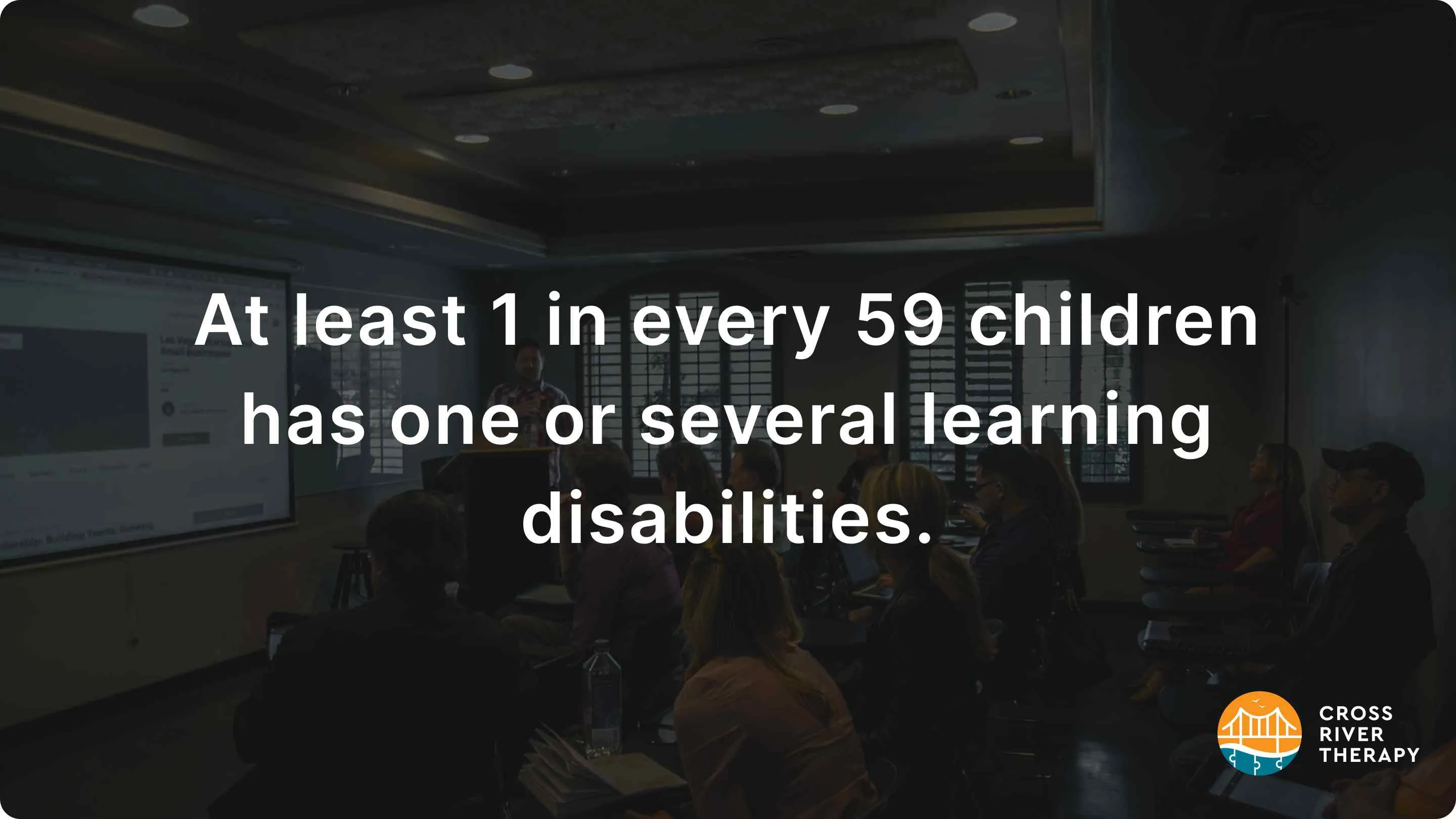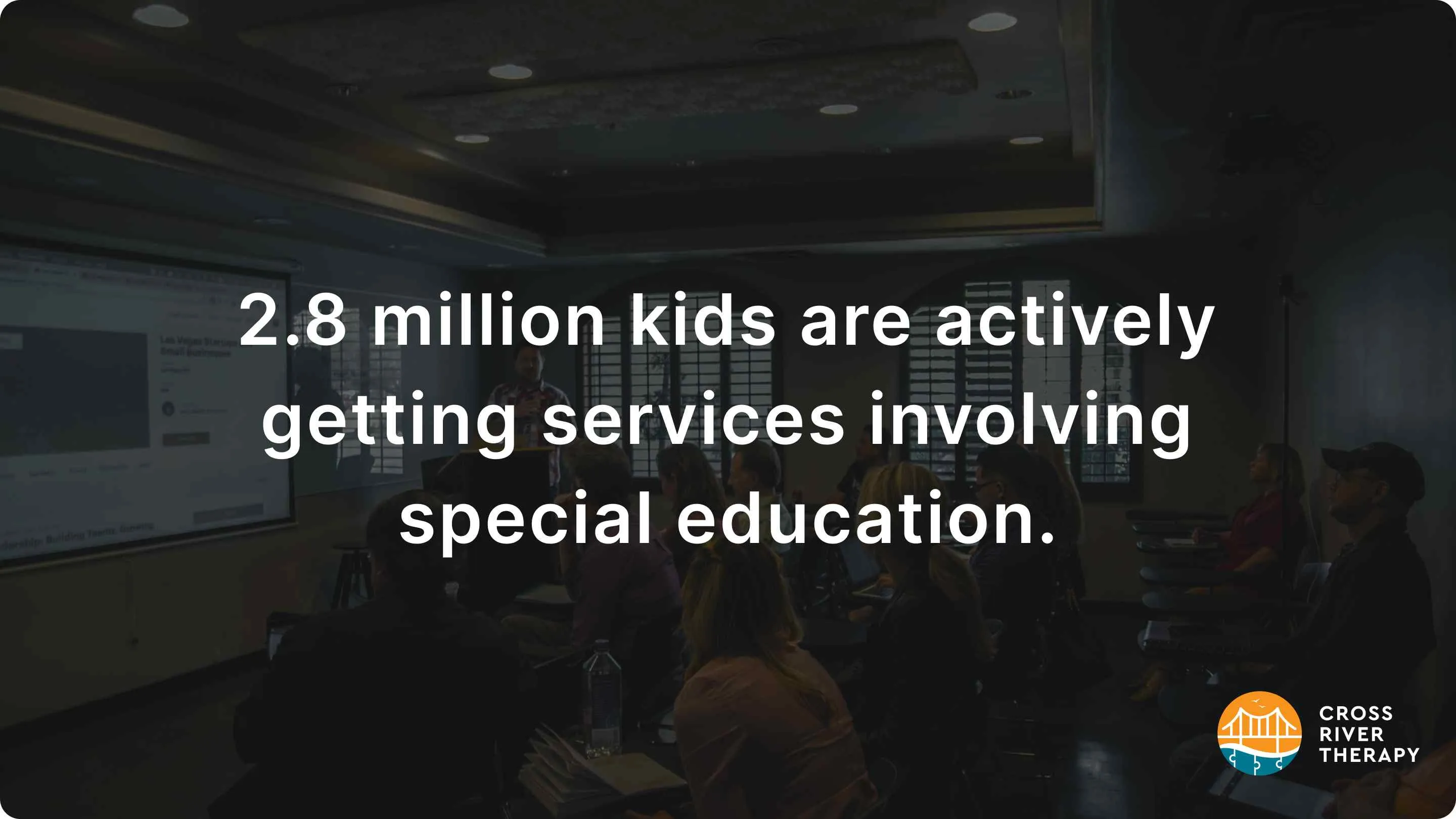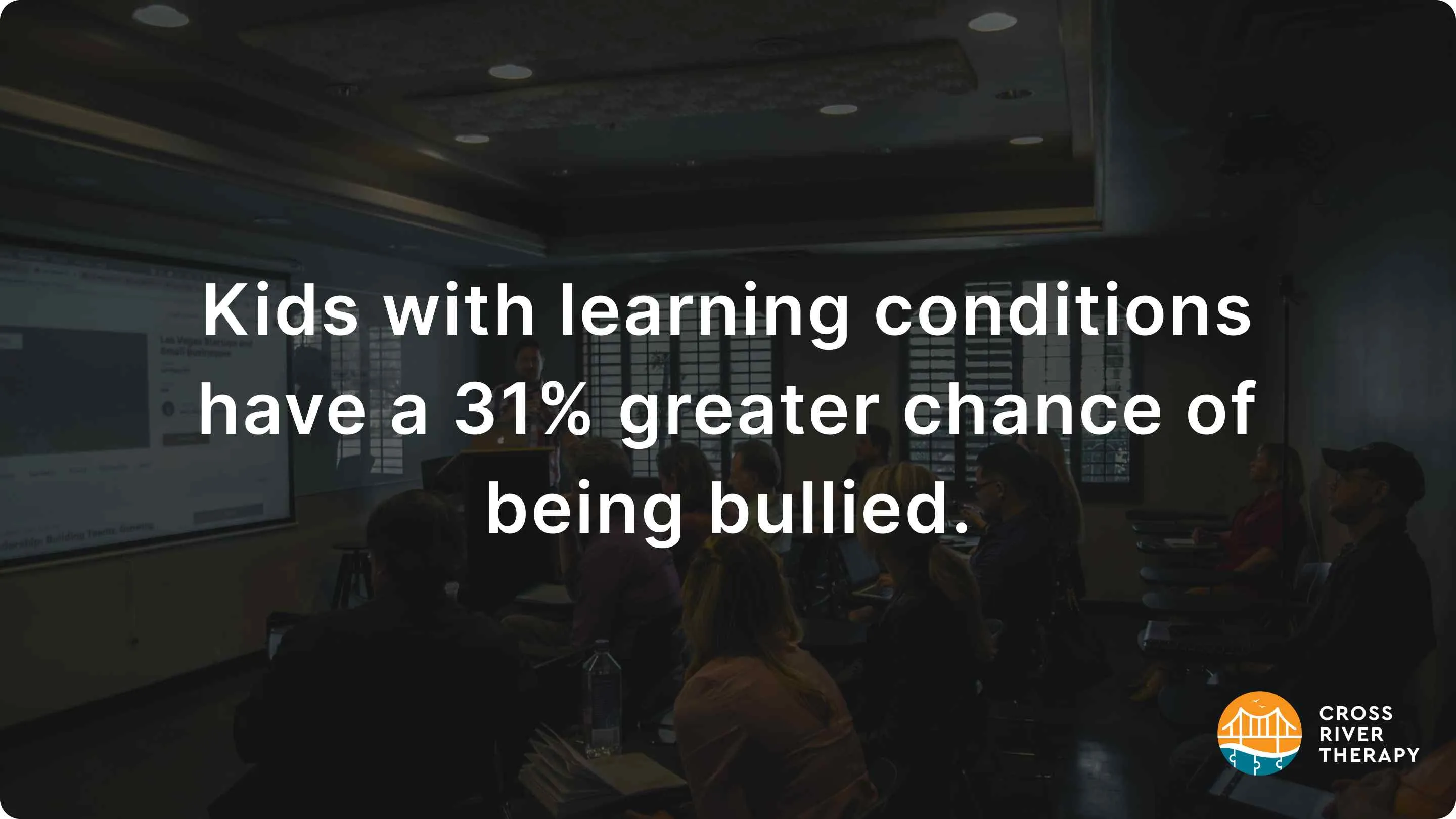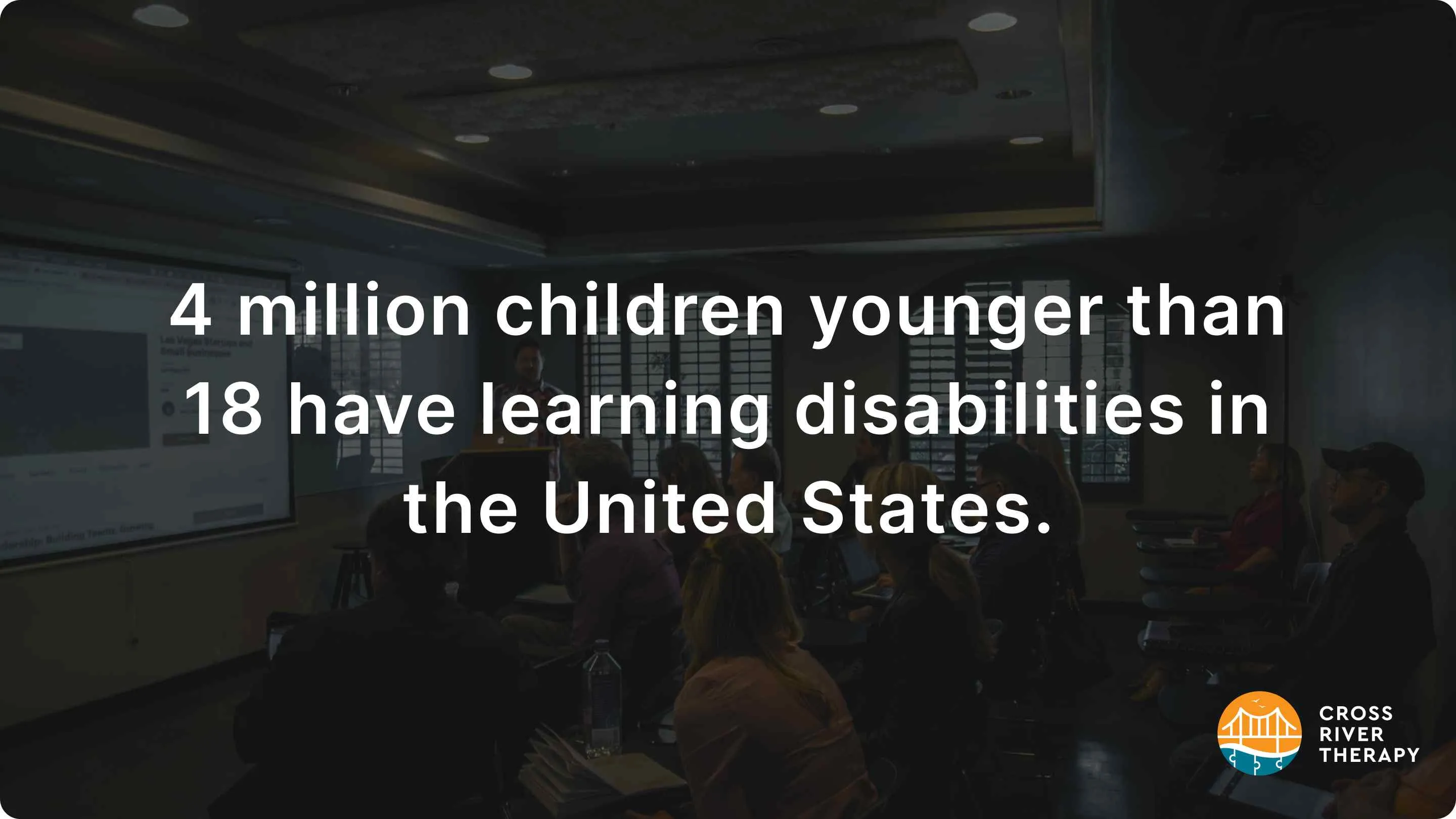41 Learning Disabilities Statistics & Prevalence (2023)
Did you know that 4 million people younger than 18 have learning disabilities in the USA?
Key Learning Disability Statistics
- At least 1 in every 59 children has one or several learning disabilities.
- 1 in 5 children in the U.S. have learning and thinking differences such as ADHD or Dyslexia.
- As of 2021, 2.8 million kids are actively getting services involving special education.
- 4 million children younger than 18 have learning disabilities in the United States.
- Children with learning disabilities account for 47% of the total amount of them receiving special education.
- Kids with learning conditions have a 31% greater chance of being bullied than kids with no disabilities.
- Boys account for about 66% of children with a learning disability diagnosis.
- Over 18% of learning-disabled kids drop out of school.
- The three most common learning disabilities found in American children are ADHD, dyslexia, and dysgraphia.
Learning Disabilities Prevalence
1. For every 59 children, at least one has a single or several learning disabilities.

Compared to all children in the US, they represent about 1.69% of the population. Areas with dense populations will have more kids with learning problems. However, income and demographics don't correlate to larger or higher concentrations of relevant disabilities.
2. As of 2021, 2.8 million kids are actively getting services involving special education.

Special education for kids that have trouble learning isn't the same as what's provided to other children with more severe conditions.
They're not wholly separated from their peers, though the classes set out for them might be different to allow for an easier learning environment with less pressure on them to rapidly take in knowledge.
Special education is given countrywide to children that need it, thanks to it being well funded in the majority of public schools.
The distinction in schools that offer this is known as special education. Special education programs that exist in a school are equipped to handle a child's needs case by case, such as familiar teachers, even when the child goes up a grade.
3. Kids with learning disabilities account for 47% of the total amount of them receiving special education.
Learning problems for kids are quite common. The services they're provided in school fall within the umbrella of special education but aren't conducted by the same teachers that work with students with more severe disabilities.
Most districts have a sizable amount of youth at this percentage. Still, a child can develop their skills to the level where special education is no longer needed.
Statistics for All Learning Disabilities
4. Grade retention happens for 33% of kids with learning disorders on individualized education plans.
Grade retention is when a child repeats the same grade for another school year. It usually occurs from the student failing to meet certain standards required by them to advance.
Failing classes and state-administered exams are common reasons. Any child that has problems learning can have this happen to them, whether they're diagnosed with a disability or not.
5. Kids with learning conditions have a 31% greater chance of being bullied than kids with no disabilities.

Bullying unfortunately remains a big problem in many school districts. Sometimes, the perpetrators of bullying are themselves bullied, either when it happens or at a previous point in time.
How Many People Have Learning Disabilities?
6. 4 million children younger than 18 have learning disabilities in the United States.

While this number is approximate and likely higher, it's a fact that millions of children around the country suffer from learning disabilities.
When mentioning a higher population, children that haven't been diagnosed or even misdiagnosed cannot be ruled out.
A learning disability can greatly inhibit a child's ability to take in knowledge quickly like their peers, could leave them feeling alone, or even result in bullying by their classmates at school.
Such kids may feel depressed which might lead to self-harming reactions as a coping mechanism. This situation is compounded when no diagnosis is given by a healthcare professional, but diagnosed patients may have the same problems, especially around their peers.
7. Boys account for about 66% of children with a learning disability diagnosis.
However, girls have learning disabilities at about the same rate as boys, indicating that fewer girls are evaluated for learning disorders than children.
The rate can change in every region. Areas with higher populations of girls may indicate the opposite. But as a whole, problems are identified earlier and more often in boys.
8. 11% of young people with ADHD show learning problems that are consistent with dyscalculia.
With dyscalculia being a disability found in people having issues learning math, it can become a major hindrance to a child with ADHD's ability to learn.
Since ADHD makes it hard to maintain focus, any type of meth field or equivalent could prove difficult to a level that forces the child to retake a semester or grade to learn.
9. Between 12 and 26% of learning disabled kids passed math and reading tests with an average grade.
10. 20% of special needs students are diagnosed with dyslexia, making it the single most common learning disability of them all.
11. ADHD accounts for 33% of all people with a learning disability.
12. 70% of learning-disabled students attend ordinary classes 80% of the time.
With so many in attendance with normal classes, the learning environment could have them underperform during critical events like quizzes, tests, homework, and final exams.
13. Over 18% of learning-disabled kids drop out of school altogether.
This is considerably higher than the average dropout rate, which is 6.5%.
14. 43% of parents would rather their child's disability be left confidential.
Parents may be fearful of their child becoming a bullying victim or their disability interfering with the school to a level where grade retention is needed to address it.
15. Adults with learning disabilities have failed to disclose that information to their employer 81% of the time.
What are the top 3 learning disabilities in the U.S?
16. The three most common learning disabilities found in American children are ADHD, dyslexia, and dysgraphia. Others commonly found are processing disorders and dyscalculia.
Most of the disorders named can be found in children when they're still very young. However, diagnosis rates do rise when a child is exposed to areas or people they aren't familiar with, such as when starting school.
ADHD is one of them, common symptoms include having considerable difficulty paying attention, staying focused on specific tasks, acting on impulses, and talking in an excessive and fast manner.
Dyslexia can cause patients to learn at a slower rate, where words are commonly mispronounced and shapes, colors, and names can become hard to remember.
Dysgraphia is seen often when someone writes or spells, where the styling of words is blended with improper capitalization or fonts.
On the other hand, processing disorders are based on the senses, with a disinterest in music and following directions that may be brought about by confusion in attempting to understand.
Lastly, signs of dyscalculia include poor performance in mathematics, excessive use of one arithmetic skill where it isn't required, and feelings of anxiety when math is taught.

